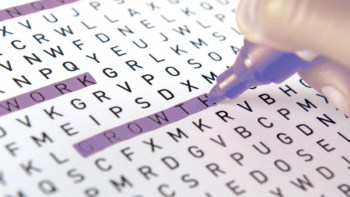
An ultra-precise quantum sensor based on trapped beryllium ions is up to 20 times better at detecting weak electric fields than previous atomic devices. By introducing entanglement between the collective motion of the ions and their electronic spin, a collaboration led by the US National Institute of Standards and Technology (NIST) demonstrated that the ion displacement sensitivity in the presence of an electric field was an order of magnitude greater than for classical protocols with trapped ions. With further improvements, the technology could even be used in the search for dark matter.
Quantum sensors can detect and measure signals that are undetectable with their classical counterparts. They are thus a promising tool in many areas of fundamental science, including biological imaging as well as physics. Of the many different systems being pursued as quantum sensors, trapped ions could be particularly favourable due to experimenters’ precise control over their parameters and their ability to introduce entanglement into the system.
The Ion Storage Group at NIST, led by John Bollinger, decided to exploit these properties for measuring very weak electric fields. “We realized our ion crystal can be incredibly sensitive to electric fields,” explains Kevin Gilmore, a former graduate research assistant at NIST and the lead author of a paper describing the research. “We found a protocol that exploits our ability to produce quantum entangled states and is very sensitive to small displacements of the ions driven by weak electric fields. It’s a neat demonstration of how quantum effects can be used to gain an advantage over classical systems.”
Entanglement enhances sensitivity
The experiment traps approximately 150 beryllium ions in a two-dimensional plane with a combination of magnetic and electric fields known as a Penning trap (see image above). The motion of the ion crystal can be thought of like a drumhead, where all ions collectively move together. In the NIST group’s system, this collective motion, known as the centre-of-mass vibrational mode, is entangled with the collective electronic spin of the ions before the experiment begins.
After entangling the centre-of-mass vibrational mode with the collective electronic spin, the centre-of-mass mode is excited with an oscillating electric field. The system is un-entangled, and the motional information of the ions – in other words, their displacement – is then stored in their individual spins, which are straightforward to measure. Hence, the motional behaviour of the ion crystal can be directly inferred from the spin measurements. With this capability, the experiment can then measure electric fields very precisely.

Hunting dark matter with quantum sensors, working abroad brings career advantages
“Our measurements surpass classical limits of sensitivity to electric fields (and displacements of the crystal),” Gilmore says. “This means that we demonstrate a sensing advantage by using quantum effects (i.e., entanglement), which is non-trivial.” He adds that the device might even be sensitive enough to detect dark matter candidates known as axions, which are thought to produce tiny oscillating electric fields.
Building bigger crystals
Now that the proof of principle has been established, the group are working towards creating sensors with larger ion crystals. While they currently trap approximately 150 beryllium ions in a two-dimensional plane, their goal is to create a three-dimensional crystal with around one million ions.
“This would greatly enhance our electric field sensitivity,” says Gilmore. “Simultaneously, we hope to reduce the dominant noise source for this experiment, which is frequency fluctuations of the centre-of-mass mode. It’s possible that using a 3D crystal may result in better overall cooling of the ions, which in turn could reduce the centre-of-mass frequency fluctuations.”
The team describes its results in Science.



